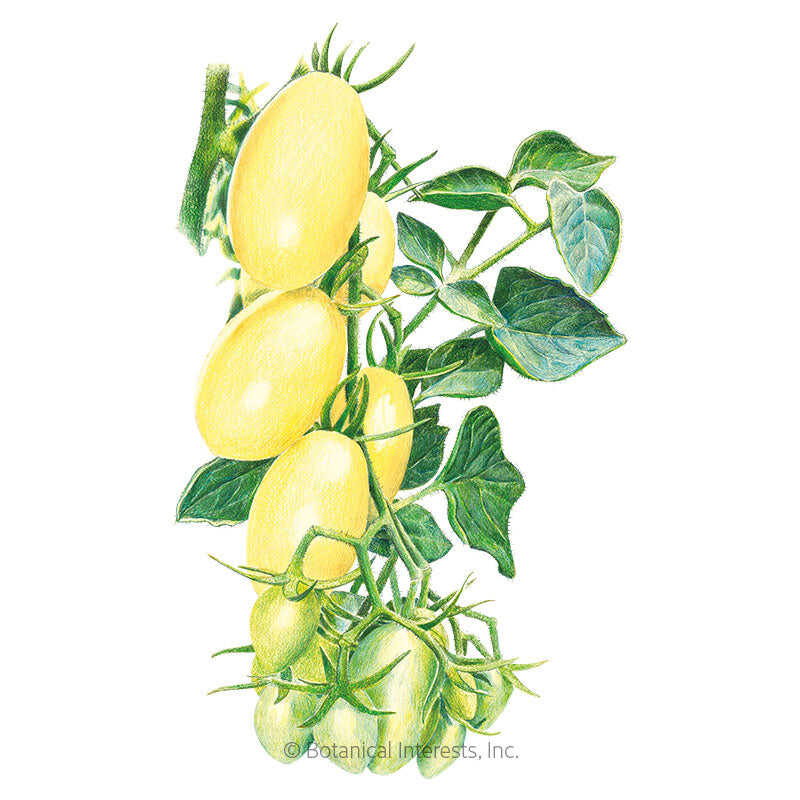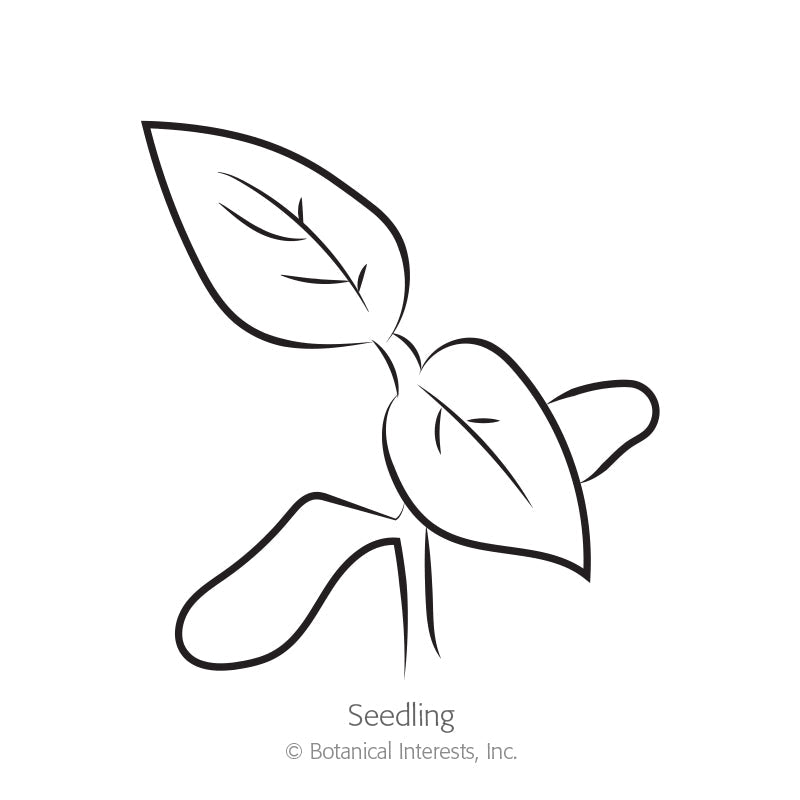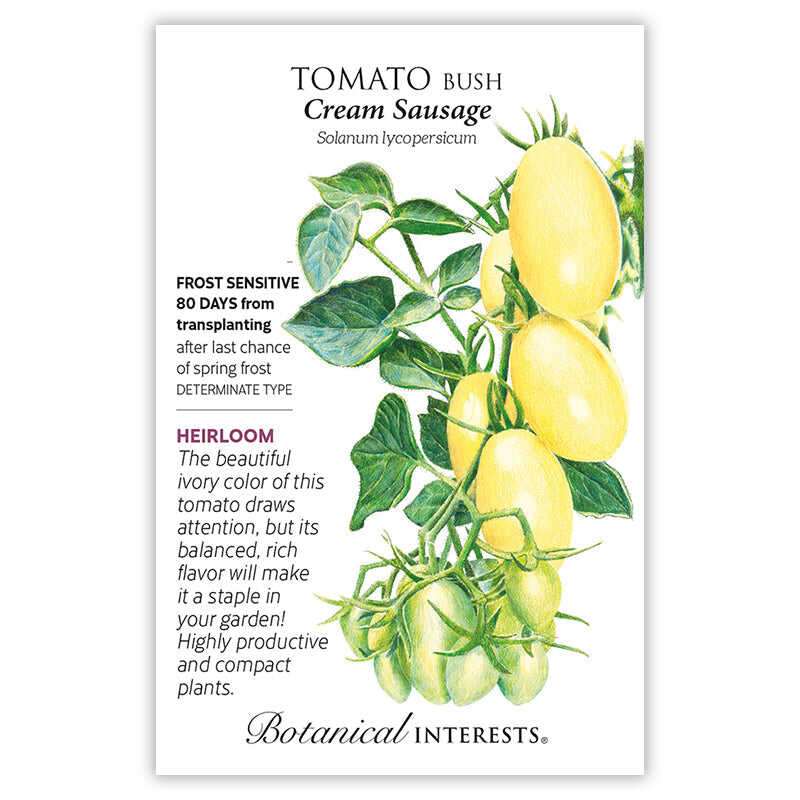


- Variety Info
- Sowing Info
- Growing Info
- Learn More
Variety Info
Days to Maturity: 80 days from transplanting
Family: Solanaceae, Nightshade family, includes tomatoes, potatoes, petunias, nicotiana, Chinese lantern, and eggplant.
Type: Determinate, Slicing or Paste Tomato (Learn more)
Native: Andes
Hardiness: Frost-sensitive annual
Exposure: Full sun
Plant Dimensions: 36" tall
Variety Info: Creamy white to light yellow, oblong, 3'' long fruits. 'Cream Sausage' is a determinate type tomato.
Attributes: Frost Sensitive, Good for Containers

Sowing Info
When to Sow Outside: For mild climates only: 1 to 2 weeks after your average last frost date, and when soil temperature is at least 60°F.
When to Start Inside: RECOMMENDED. 4 to 6 weeks before transplanting. Transplant when air temperature is 45°F or warmer, usually 1 to 2 weeks after your average last frost date. Ideal soil temperature for germination is 70°‒90°F.
Days to Emerge: 5 – 10 days
Seed Depth: ¼"
Seed Spacing: A group of 3 seeds every 24"
Row Spacing: 36"
Thinning: When 2" tall, thin to 1 every 24"
Your hardiness zone is
Growing Info
Harvesting: "Cream Sausage' tomatoes are at the peak of sun-ripened deliciousness when creamy white to light yellow, and have a slight give when gently squeezed. Include for all but green tomatoes: Tomatoes may also be picked at the “first blush” stage, when 50% of the tomatoes' color has begun to change, and ripened at room temperature without decreasing flavor or nutrition. Picking often and early increases yield, and decreases the risk of cracking and pest damage. Ripe fruit left on the vine during rain or watering is more susceptible to splitting. About 1 month before the average first fall frost, clip all blossoms and undersized fruit off the plant, signaling to the plant to ripen what’s left. Pick any unripe fruit before frost, and store them indoors in a single layer away from direct sunlight to ripen."
Special Care: Do not mulch when weather is still cool; the roots of young plants need to be in soil that is warmed by the sun. When the weather warms up and plants are established, mulch to a depth of 2" or 3" with a material such as straw, leaves, or compost, to conserve moisture, reduce weed growth, and keep the roots warm.




